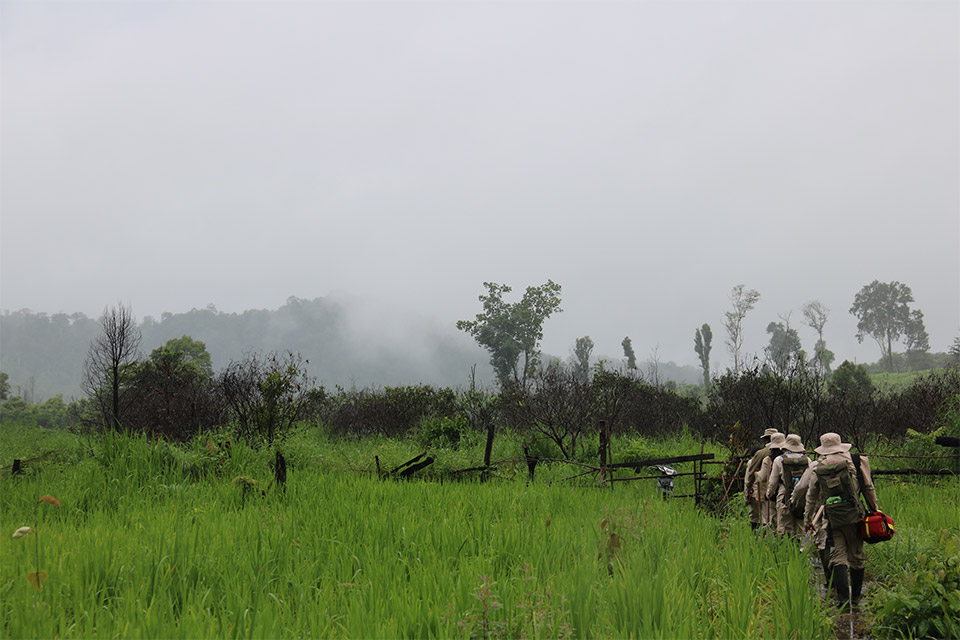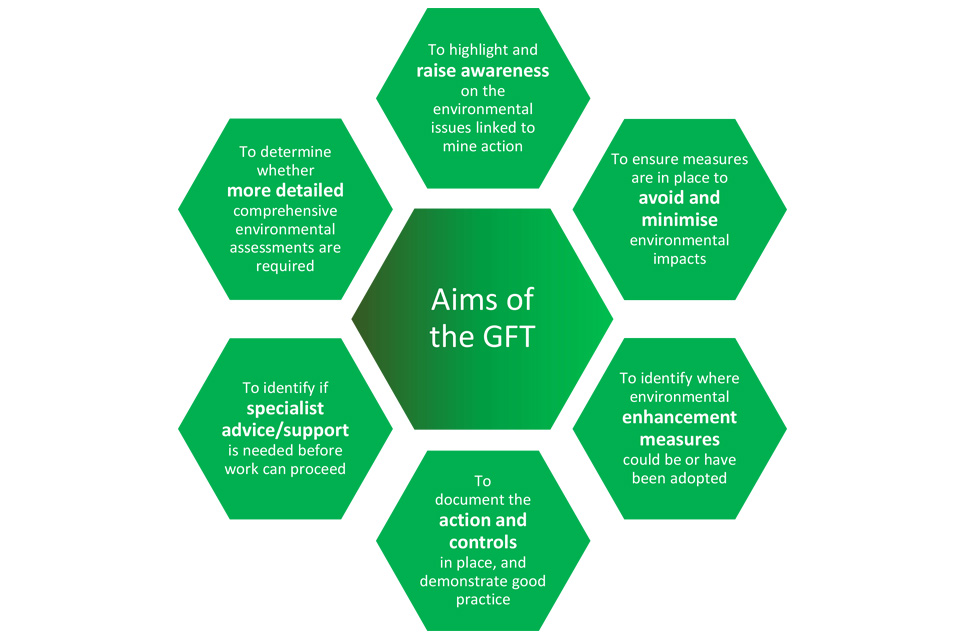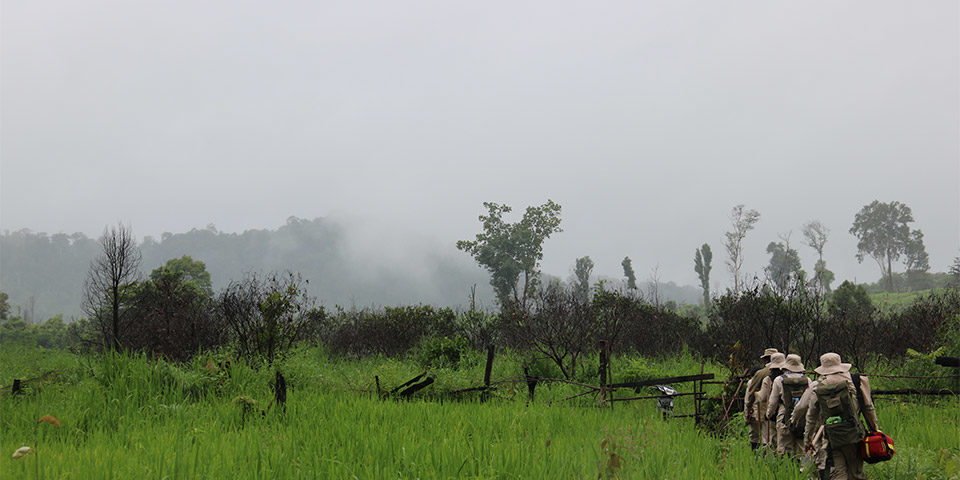Mine action is more effective in protecting people when it protects and restores the environment they depend on.

Globally, around 60 million people live in areas affected by landmines and other explosive ordnance. Clearing them is critical for safe access to land and local resources but doing so should comply with good environmental practice. Linsey Cottrell introduces how our new Green Field Tool can help the mine action sector minimise the environmental footprint of demining and support affected communities.
Why the Green Field Tool is needed
The clearance and destruction of anti-personnel mines and other explosive remnants of war (ERW) can result in adverse environmental effects if improperly managed. Updated in 2024, the International Mine Action Standard (IMAS) 07.13 now covers climate change and the consideration of environmental enhancement opportunities, and provides a framework for the implementation of good environmental practice across mine action.1
The Green Field Tool (GFT) is an environmental screening and assessment tool that has been developed by Norwegian People’s Aid and CEOBS, and designed to support the planning and implementation of mine action field operations. The scope is based on NEAT+ — a tool that is applied for other humanitarian sectors in the project design phase. The core aims of the GFT are to raise awareness of environmental issues and improve environmental practices in alignment with IMAS 07.13 (see the figure below). This includes identifying when more detailed and comprehensive environmental assessments are required and whether other specialist environmental advice and support is needed before any work can proceed. The GFT also allows action and controls to be documented, to demonstrate compliance.

A practical approach
The GFT should be used as early as possible in the planning process, with climate and environmental information collected as part of programme planning, local engagement and non-technical surveys. The GFT is supported by an open source data platform to help users navigate available environmental data, and can be useful to highlight high level information and vulnerabilities. Guidance and short training videos are all available through the Environmental Issues and Mine Action (EIMA) working group.
Momentum on environmental mainstreaming
The mine action sector is making progress on improving practices, and the environment is enjoying an increasingly high profile. For example, featuring as a plenary theme at this year’s Meeting of Mine Action National Directors and United Nations Advisers (NDM-UN28) under the title ‘Restoring Land for a Greener, Sustainable Future’. Monitoring progress on environmental conduct has already begun. Since 2023, Mine Action Review has incorporated environmental criteria in its annual sectoral reports to reflect the need for national mine action authorities and clearance operators to mainstream environmental and climate change considerations in their programmes.2 There are currently five criteria on ‘environmental policies and action’ that are given a 10% weighting when determining the overall performance score of affected states. Mine Action Review has also published Environmental Protection in Mine Action: A Review of Good Policy and Practice, showcasing practical case studies and encouraging greater engagement.
Environmental initiatives across mine action and the wider humanitarian sector are relatively new, and there is limited consistency around how environmental performance is measured between organisations. A standardised set of environmental reporting indicators for mine action has also been proposed, to enable a common approach to reporting and comparison between organisations. Outputs from the GFT can feed into this reporting framework.
We encourage organisations to explore all GFT resources, and welcome feedback on how it is being adopted and adapted through the EIMA working group. It is hoped that this will help to strengthen capacity and good environmental practice across mine action, and increase engagement across all stakeholders.
A side event at the NDM-UN28 on Thursday 10 April will focus on the new GFT, as well as new research findings on long-term environmental impact of mine action. Further details are here.
Linsey Cottrell is CEOBS’ Environmental Policy Officer; CEOBS has been working with NPA to mainstream the environment in mine action since 2018. Our thanks to the UK government for funding provided by UK International Development, as well as initial funding from the government of Norway.
- IMAS 07.13 is also supported by the Technical Note for Mine Action, TNMA 07.13/01
- Mine Action Review’s ‘Clearing the Mines’ and ‘Clearing Cluster Munition Remnants’ annual reports are available at https://www.mineactionreview.org/documents-and-report





